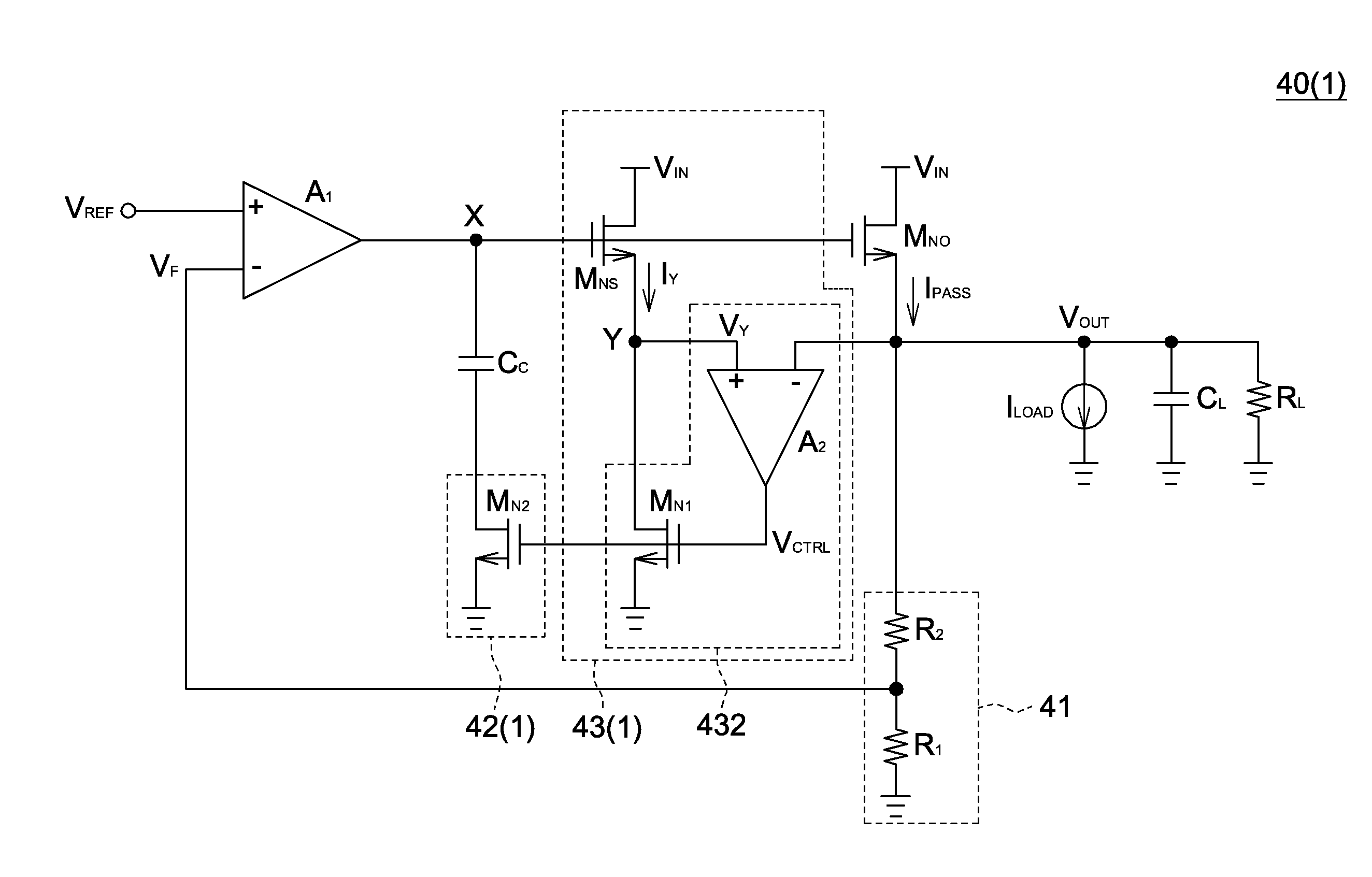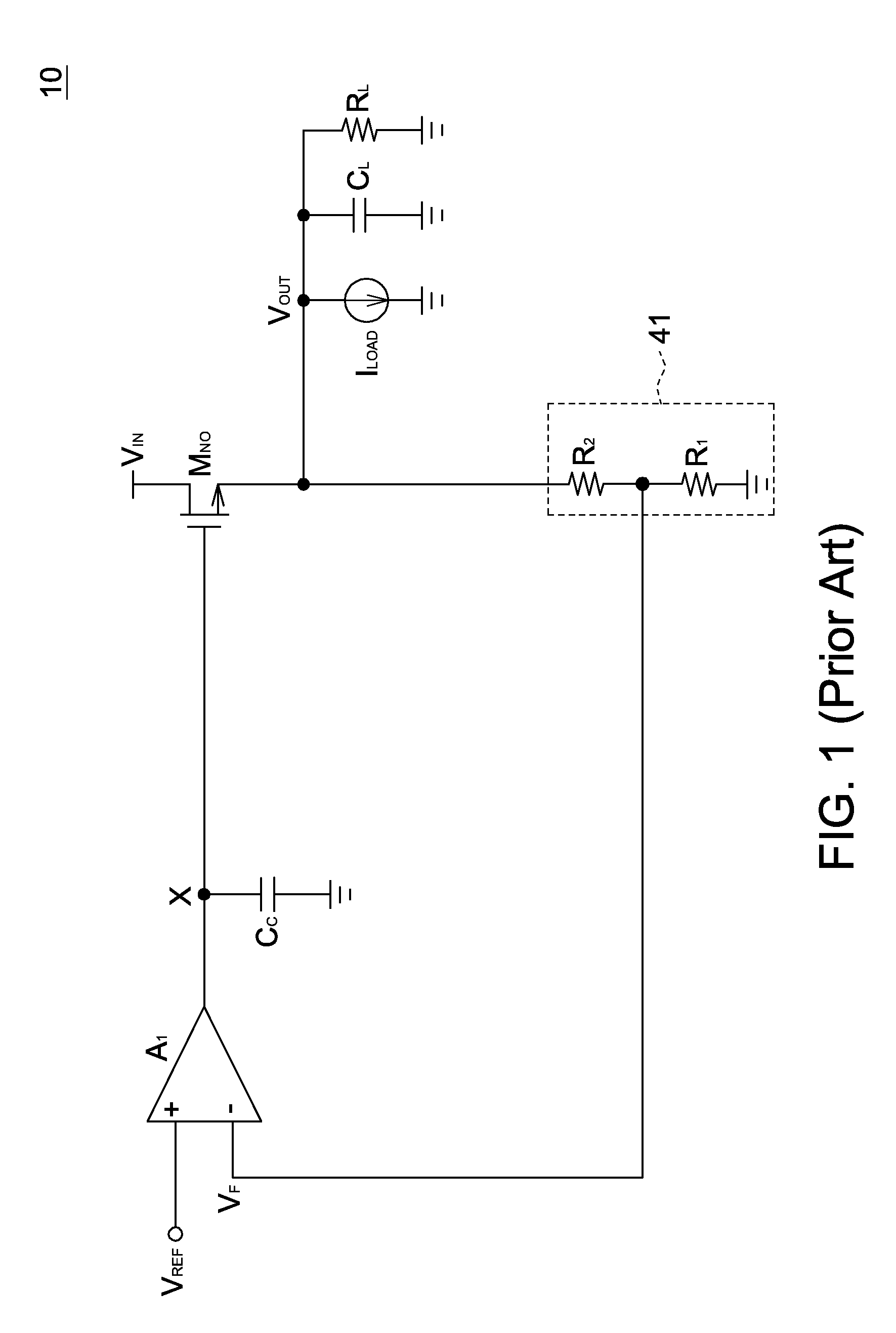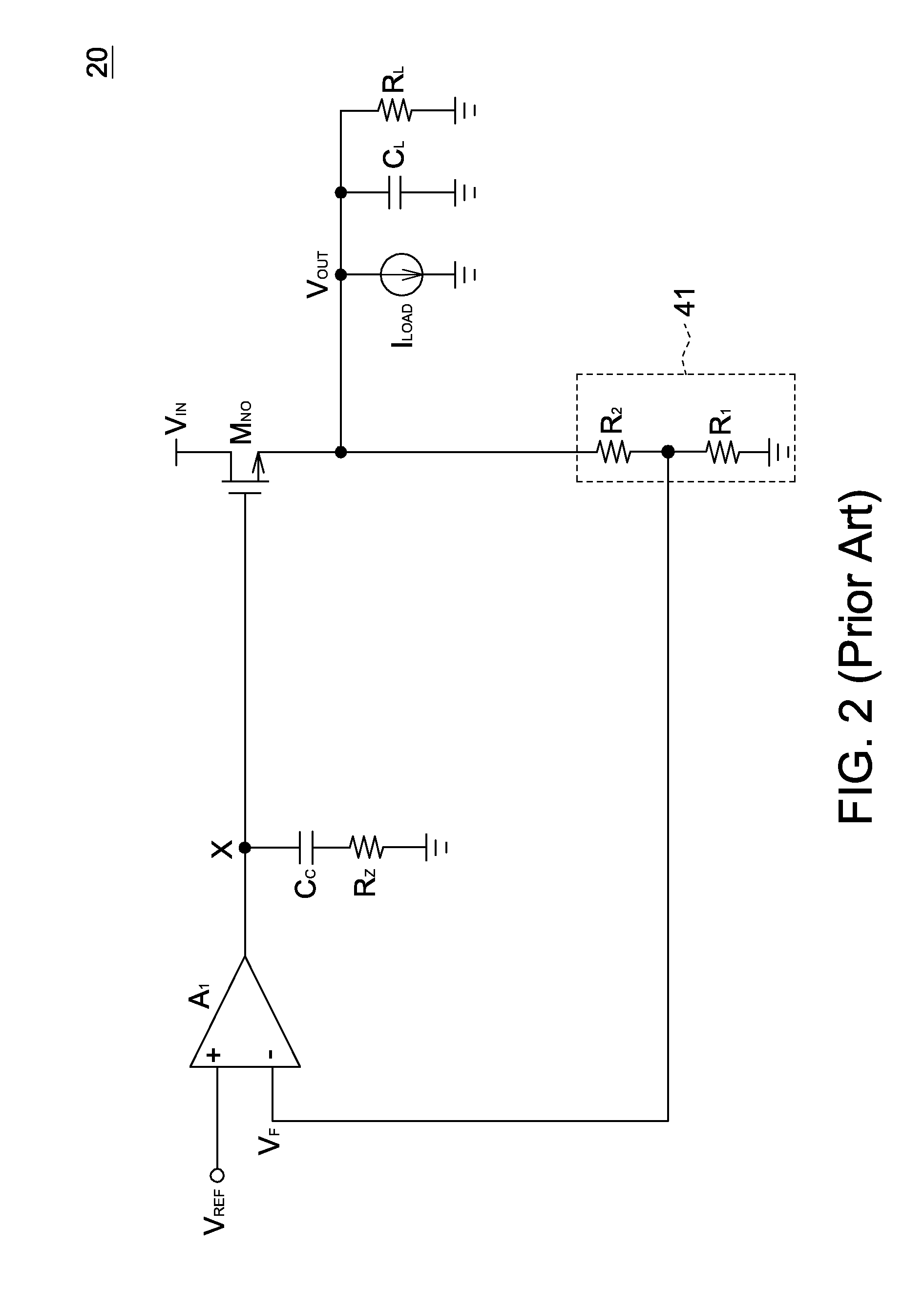Linear voltage regulator and current sensing circuit thereof
a voltage regulator and current sensing technology, applied in the direction of electric variable regulation, process and machine control, instruments, etc., can solve the problems of resistance of the resistor rsub>z /sub>, unstable linear regulator,
- Summary
- Abstract
- Description
- Claims
- Application Information
AI Technical Summary
Benefits of technology
Problems solved by technology
Method used
Image
Examples
first embodiment
[0027]Referring to FIG. 4, an architect diagram of a linear regulator is shown. The linear regulator 40, realized by such as a high drop-out (HDO) linear regulator, comprises a pass transistor MNO, a compensation capacitor CC, a feedback network 41, an error amplifier A1, a variable resistor 42 and a current sensing circuit 43. For convenience of elaboration, the pass transistor MNO of FIG. 4 is exemplified by an N-type metal-oxide-semiconductor (MOS) transistor. However, the type of the pass transistor is not limited thereto, and the pass transistor can also be realized by a P-type MOS transistor, an NPN bipolar junction transistor (BJT) or a PNP bipolar junction transistor.
[0028]A first terminal of the pass transistor MNO receives an input voltage VIN, and a second terminal of the pass transistor MNO outputs an output voltage VOUT. A first terminal and a second terminal of the pass transistor MNO are realized by a drain and a source, respectively. The variable resistor 42 is coupl...
second embodiment
[0035]Referring to FIG. 6, a circuit diagram of a linear regulator of a second embodiment is shown. In the second embodiment, the linear regulator 40, the variable resistor 42 and the current sensing circuit 43 are exemplified by a linear regulator 40(2), a variable resistor 42(2) and a current sensing circuit 43(1), respectively. The second embodiment is different from the first embodiment mainly in the variable resistor 42(2), which further comprises a transistor MN3 in addition to the transistor MN2. A first terminal and a second terminal of the transistor MN3 are realized by such as a drain and a source, respectively. A control terminal of the transistor MN3 is realized by such as a gate. The first terminal of the transistor MN3 is coupled to a control terminal of the transistor MN3. The second terminal of the transistor MN3 is coupled to the compensation capacitor CC and the first terminal of the transistor MN2. The transistor MN3 operates in the saturation region to form an eq...
third embodiment
[0037]Referring to FIG. 7, a circuit diagram of a linear regulator of a third embodiment is shown. In the third embodiment, the linear regulator 40, the variable resistor 42 and the current sensing circuit 43 are exemplified by a linear regulator 40(3), a variable resistor 42(3) and a current sensing circuit 43(2), respectively. The third embodiment is different from the second embodiment mainly in the variable resistor 42(3) and the current sensing circuit 43(2). The current sensing circuit 43(2) further comprises a transistor MN2, which is coupled between the variable resistor 42(3) and the ground terminal. The control terminal of the transistor MN2 is coupled to the output terminal of the sense amplifier A2. The transistor MN2 is controlled by the sense amplifier A2. The variable resistor 42(3) merely comprises a transistor MN3. A first terminal and a second terminal of the transistor MN3 are realized by such as a drain and a source, respectively. A control terminal of the transi...
PUM
 Login to View More
Login to View More Abstract
Description
Claims
Application Information
 Login to View More
Login to View More - R&D
- Intellectual Property
- Life Sciences
- Materials
- Tech Scout
- Unparalleled Data Quality
- Higher Quality Content
- 60% Fewer Hallucinations
Browse by: Latest US Patents, China's latest patents, Technical Efficacy Thesaurus, Application Domain, Technology Topic, Popular Technical Reports.
© 2025 PatSnap. All rights reserved.Legal|Privacy policy|Modern Slavery Act Transparency Statement|Sitemap|About US| Contact US: help@patsnap.com



